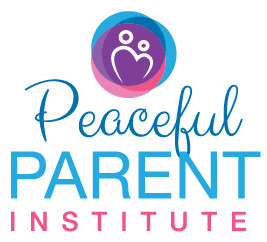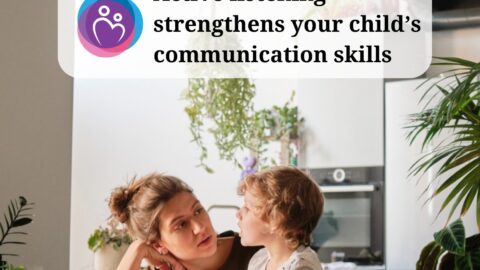Is it even possible to peacefully navigate conflicts?
Most of us grew up in families where conflicts were not managed so well. And when that’s the case, we not only don’t learn conflict resolution skills, we can bring some really unhelpful habits into our adult lives. There’s a good reason the famous quote by Ram Dass is so popular; “If you think you’re enlightened go spend a week with your family”!
We cringe to imagine that our children would grow up to feel uncomfortable to be themselves with us. Instead, we want to break the generations-old patterns of dysfunctional relating. We want to model good communication and conflict resolution skills for our children that will benefit them endlessly throughout their lives.
We want our children to truly feel confident to be themselves and speak their minds and hearts. We want them to feel secure that we care about their feelings and their opinions even when we disagree. And we want them to continue to share the tough stuff with us through their teens and into adulthood with the trust that we will always slow down, become present and engage at that heart-to-heart level.
Healing our hearts.
Aspiring to navigate conflicts more skilfully is admirable and worthy of our commitment. Improving communication needs to be an ongoing journey of change and growth. Love alone isn’t enough to ensure every family member feels truly seen, heard and cared for. For family members to feel truly seen and heard, we parents need to improve our active listening skills. And from there, we can model the same. Ideally, conflicts can provide teachable moments to help everyone practice active listening and problem solving skills.
For the dream of increased harmony to become a reality, we need to figure out how to;
1. Reduce the frequency of ruptures,
2. Minimise the hurts when tensions rise and
3. Repair ruptures after conflicts.
The good news is that these skills really can be learned.
Very few parents grew up in a family where their parents modelled healthy emotional conversations. So, if this is new and daunting as a parent, know that you’re not alone! Healing our hearts and maintaining heart-to-heart conversations is not just an intellectual journey. It’s a journey of healing old wounds and learning to keep an open heart and an open mind despite the deeply programmed urges to shut down and cling to old beliefs.
Parents soon learn that wishing to do better than their parents is just the beginning. There’s a lot to learn and indeed unlearn! Childhood patterns and hurts can live on and can be hard to overcome! Differences of wants and needs are unavoidable, misunderstandings will inevitably happen. So how can we maintain warm connections? How can we ensure that everyone’s voice is heard? How can conflicts get genuinely resolved and not just silenced or buried?
Fight, flight, freeze or please.
It’s normal to believe that the conflict is caused by the other, be it one’s partner or child. And when our version of what has happened differs so dramatically from theirs, it can be very confusing. Attempting to discuss these differences often leads to defensiveness and upset, resulting in more confusion, distress, and overwhelm. Misunderstandings mount.
Our stress response gets triggered and the deeply ingrained reactions to either fight, flight, freeze or please can kick in. And as much as these reactions may have been all we could do as children, they rarely lead to satisfying outcomes in our present family dynamics!
Let’s break down the messy dynamics a little to gain more clarity. If we’re to change generations of old patterns, we need to be pretty clear about what the healthier approach to conflicts looks like. And to this end, understanding the different approaches to conflicts can help you find your way back to a more productive approach when you get derailed.
There are three dominant approaches to conflict that we need to be able to identify.
One approach is avoidant and relates to the flight or freeze stress response, the second is the fight stress response and the third healthier approach is to mindfully manage one’s stress response and bring connection into the interaction. The flight or freeze approach is to try and avoid conflict, the second fight stress response is a confrontational approach and the third option is to diffuse and resolve conflict through connection and calm, clear communication.
What are the pitfalls of attempting to avoid conflicts in the family?
Avoidance, the approach for those whose stress response tends to be flight or freeze, tends to have many unforeseen consequences. Aiming to simply avoid and discourage conflicts generally results in family members feeling shut down, resentful and misunderstood, and often shamed. And these are the very feelings which lead to increased conflicts in the family!
“Avoidance is the best short-term strategy to escape conflict, and the best long-term strategy to ensure suffering.” Brendon Burchard.
Instead of simply avoiding and discouraging disharmony, which puts the focus on what should not happen, a much healthier approach is to actively work towards resolving conflicts as they arise. This is more of a “ok let’s talk this through” response, instead of “why must you always complain!” People who persistently try to avoid conflict tend to put the focus on wishing others didn’t disagree or get upset. Which is both unrealistic and indeed tends to increase tensions when anyone does disagree or gets upset. Those whose voice is silenced in childhood can struggle to speak up for themselves or others when facing injustices. Or struggle to cope with their child’s upsets. See the patterns?
The fight response results in being directly confrontational or aggressive
This response is quite similar to the flight or freeze response in that the main message the child receives is that their disagreements or upsets are not tolerated. It can include raising one’s voice or yelling to overpower the child. Or the overpowering can happen when the parent is overly analytic resulting in a power struggle type debate. It’s understandable for parents to feel defensive, misunderstood and unappreciated. Yet it’s our role as a parent to show our child again and again that our care for their feelings is stronger than our need to be right.
These more aggressive, forceful or defensive approaches tend to make the other feel that not just their actions, but also their feelings are not tolerated. As well as very tense communication, it can manifest as enforcing punishments. Punishments can include sending a child to their room (separation-based punishment), labelling, shaming, storming around, banging items or slamming doors. This can be very intense for children and sadly also impact a parent’s trust in themselves, their confidence and their dignity.
You might like to also read: Why children lash out and how to prevent it and for parental anger Why we explode and how to prevent it.
We need to own and manage our emotions to avoid deflecting.
Whether reacting from the fight or the flight/ freeze stress responses, many adults sadly resort to unhealthy tactics learned in childhood. Tactics such as denial, deflecting, being defensive, gaslighting, guilt tripping, stonewalling and even lying when conflicts arise. These deflections are the opposite of being honest and transparent about one’s true feelings and tend to cause the other to feel blamed. These deflective tactics may be all someone can draw on if they weren’t taught how to skillfully and respectfully navigate conflicts during childhood. A bit like young adults who leave home having not gained good domestic skills might overly rely on convenience and fast foods.
So much of the focus in my eCourses are on helping parents learn to change this stress response. Most people need such courses or counselling to help them change their pre-programmed responses through improved self-care, self-healing and emotional regulation practices that need to be practiced regularly until they become internalized.
Check out our Peaceful Parent Suite which provides invaluable help for families dealing with overwhelm!
There are lots of Peaceful Parent resources for families dealing with anger, overwhelm, yelling or aggression who are craving more peace and harmony. Our Overcoming Overwhelm eCourse is a great step by step process for parents wishing to reduce their own frustrations and overwhelm and put an end to yelling or stonewalling their child.
Other great member resources include: The Mindful Parenting eCourse, the Meeting Aggression With Connection Resource Kit, our Peaceful Parenting Step by Step eCourse which simplifies the PP skills which invite more cooperation, the Self-Healing Group and the Peaceful Partnering Group and more.
People who develop the skills to manage the emotions that conflicts bring, plus skills to communicate effectively and fairly will naturally teach their children healthy conflict resolution skills. These skills bring huge advantages in life.
How can we best maintain peace and harmony in the family
In any one day there can be a multitude of conflicting wants, needs, preferences and opinions. The parent needs their child to get dressed and ready to go out the door, the child passionately wants to play with their toys and stay in their PJs.
When parents are overly focused on avoiding conflict at all costs, this can in fact result in denying and hence not addressing important emotions and issues. Kids pick up an adult’s aversion to conflict and can start to contain and suppress their needs to express their thoughts, feelings and needs that they sense will cause their parent stress. Or go in the opposite direction and amplify their upsets knowing their parent always buckles and gives in to even unreasonable demands.
Skilfully working with conflicts teaches our children to do the same.
A much healthier and balanced approach focuses on the importance of each person feeling heard and understood. The healthier approach always requires bringing in some connection to dissipate the distress of disconnection.
Connection tends to dissolve power struggles. Connection can be expressed through empathy or affection, it may be validating the other’s feelings and showing them that their feelings make sense even if we disagree. We might create some common ground “this is hard for everyone”. When everyone involved feels seen, heard and understood, it’s much easier to negotiate and problem-solve to find the best solutions that meet as many needs as possible.
Connection before correction.
It’s easy for a parent to think they have to either submit to their child’s wishes at the expense of other needs (like getting out the door) or become forceful. Yet connecting before correcting tends to work so much better. The parent might come down to the child’s level, tune in to their world and make a connection before tackling what needs to happen. This often creates a bridge that makes it easier for the child to negotiate and present a solution; “how about I just do one more circuit on the track with my cars and then I’ll get dressed?” Kids are much more cooperative in carrying out a plan they had a part in making.








